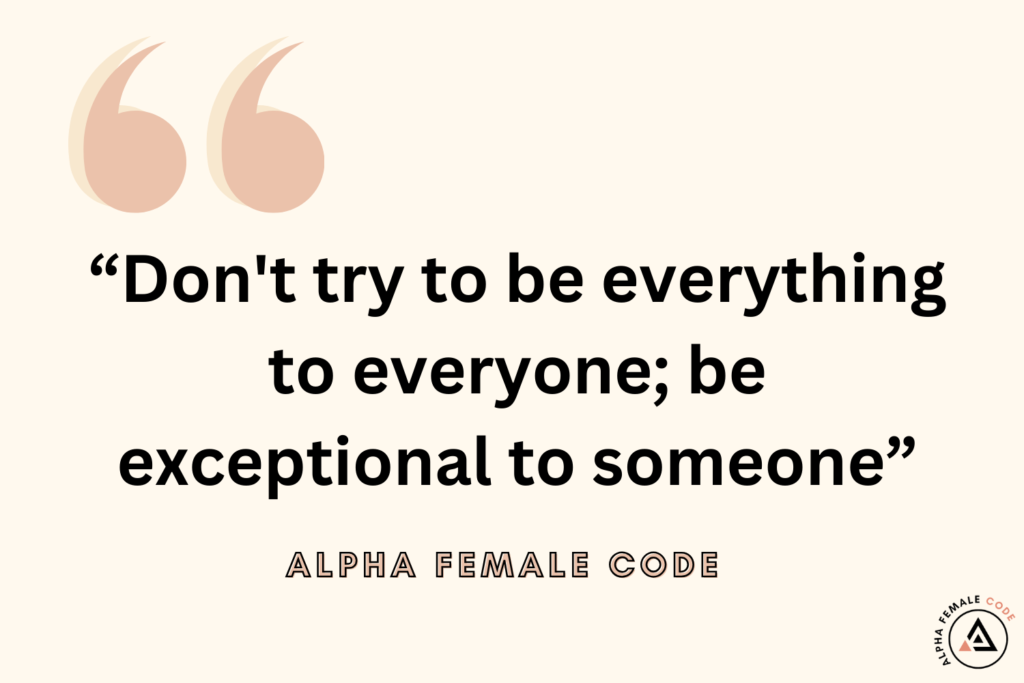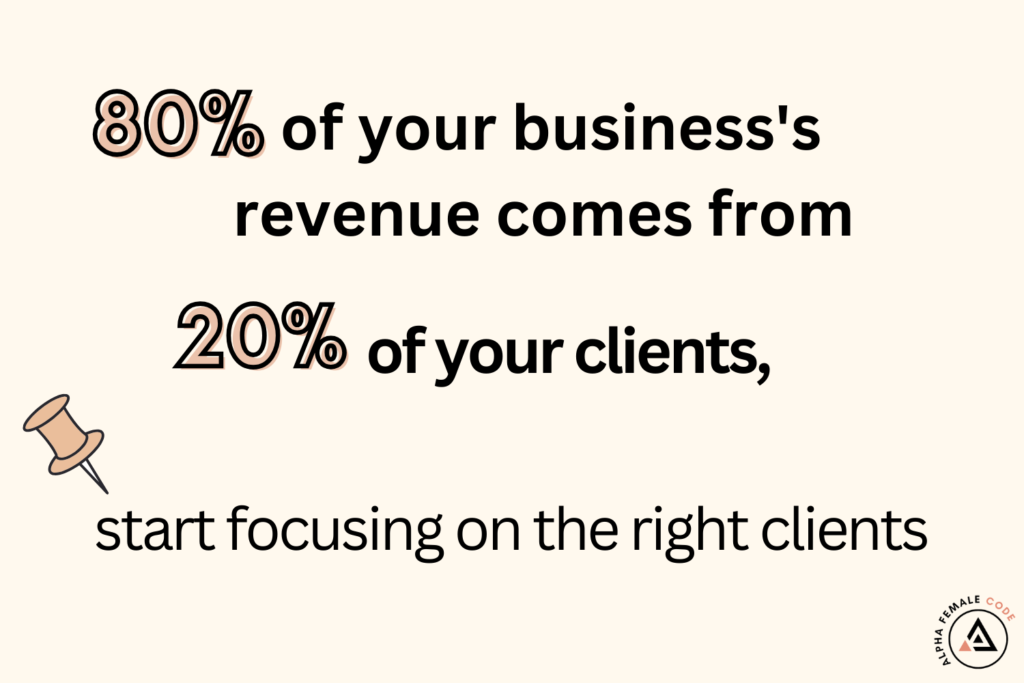
In the ever-evolving landscape of business, the concept of being everything to everyone is a noble but impractical aspiration.
The diversity of individual needs and preferences, coupled with limited resources, makes it challenging to effectively cater to a broad audience. Specialization, on the other hand, offers a strategic advantage.
By honing in on your ideal clients and addressing their specific needs and challenges, your business can provide tailored solutions, establish a strong brand identity, and foster deeper, more lasting customer relationships.
What is an ideal client?
An ideal client, sometimes referred to as a target client or customer, is a representation of the perfect or most desirable customer for a business.
It is a fictional or hypothetical character that embodies the characteristics, behaviors, and demographics that align best with the products or services a business offers.
Identifying and understanding your ideal client is essential for successful marketing, product development, and customer engagement.
Why is an ideal client important for your business?
Defining and understanding your ideal client is critically important for your business for several reasons:
- Efficient Marketing: Knowing your ideal client allows you to focus your marketing efforts on the people most likely to buy from you. This results in higher conversion rates and more cost-effective marketing campaigns.
- Tailored Products and Services: By understanding your ideal client’s needs and preferences, you can develop products or services that are more closely aligned with what they want, increasing the likelihood of customer satisfaction and repeat business.
- Effective Communication: Knowing your ideal client’s characteristics and values helps you craft messaging and content that resonates with them. This leads to better engagement and a deeper connection with your audience.
- Competitive Advantage: Understanding your ideal client enables you to differentiate your business from competitors by offering unique solutions that cater to their specific needs.
- Increased Customer Loyalty: When you serve your ideal clients well, they are more likely to become loyal customers who refer your business to others.
- Resource Efficiency: Focusing on your ideal client allows you to allocate your resources more efficiently. You can avoid wasting time and money on marketing efforts that target the wrong audience.
- Long-Term Growth: Over time, as you continue to serve your ideal clients and exceed their expectations, your business is more likely to experience sustainable growth and profitability.
- Client Retention: Identifying your ideal client helps you understand what’s most important to them. This knowledge enables you to tailor your customer service and support to keep them satisfied and loyal.

RELATED POSTS:
- How to deal with negative feedback from clients?
- 10 Goal alignment strategies for female entrepreneurs.
- 15 ways to build internal validation.
Why your ideal client needs you?
Your ideal client needs you as a trusted partner and problem solver. They seek your expertise and guidance, knowing that you hold the solutions to the challenges they face. You save them valuable time and effort by streamlining processes and offering efficient, customized solutions tailored to their unique needs.
Your reputation and track record provide a sense of trust and reliability, granting them peace of mind. For some, your collaboration is essential for growth, as you become an integral part of their network or ecosystem.
In short, your ideal clients need you not just for what you offer but for the assurance, support, and quality you bring to their endeavors, making you an indispensable part of their journey to success.
Why can’t you be for everyone?
Attempting to be a solution for everyone, while a well-intentioned notion, is a daunting and often unattainable goal for businesses. The fundamental reason lies in the vast diversity of needs, preferences, and priorities that individuals possess.
What resonates with one customer may not hold the same appeal for another. As a business, your resources are limited, be it in terms of time, budget, or personnel.
Spreading these resources too thin in an effort to serve everyone can lead to compromised quality, weakened customer service, and products or services that lack the specialization needed to excel in a crowded marketplace.
Moreover, a brand identity that is broad and vague can dilute your position in the market. In contrast, a business that narrows its focus to serve a particular niche can develop a distinct, clear brand image that sets it apart.
Specialized businesses can gain a competitive edge by focusing on a specific niche and becoming a leader in that segment. Attempting to be a generic solution for a broad audience can lead to a loss of competitiveness and relevance in a rapidly changing market.
Lastly, the profitability of your business is often closely tied to your ability to prioritize customers who bring the most value. Trying to cater to everyone may mean you allocate significant resources to less profitable segments of your market, which can impact your bottom line
How to find your ideal client?
1. Define Your Ideal Client
Defining your ideal client is the crucial first step in building a successful business. It involves creating a clear and detailed picture of the exact type of female entrepreneur you want to serve.
This process allows you to align your products, services, and marketing strategies to meet their unique needs, values, and preferences. By understanding your ideal client at a deep level, you can tailor your offerings to provide maximum value and build strong, lasting relationships with the individuals who matter most to your business.
Your ideal client might be a female entrepreneur in her mid-30s to early 40s, running a small e-commerce business. She’s ambitious, values work-life balance, and is looking to scale her online presence.
Defining this ideal client helps you shape your marketing services to meet her specific needs, creating a stronger connection and better results for her business.

2. Understand Your Ideal Client’s Challenges
Understanding your ideal client’s challenges is essential to providing effective solutions.
For example, female entrepreneurs often encounter a unique set of obstacles, such as balancing family and business, breaking through gender bias, and accessing financial resources.
By identifying and empathizing with these specific challenges, you can tailor your services and support to address their pain points directly, demonstrating your commitment to helping them succeed.
For instance, let’s say you run a coaching service for female entrepreneurs. By understanding your ideal client’s challenges, you discover that many of them struggle with time management due to juggling business and family responsibilities.
You can then develop coaching programs and resources specifically focused on helping them better manage their time and achieve work-life balance, effectively addressing a common challenge they face.
3. Know Your Unique Value
Recognizing your unique value is about understanding what sets you apart as a service provider for female entrepreneurs.
Your strengths and expertise can be a significant asset in assisting these women in their entrepreneurial journey.
Whether it’s your in-depth knowledge of a particular industry, your ability to provide mentorship, or a special skill that solves a particular problem, highlighting your unique value helps female entrepreneurs see how you can make a difference in their businesses and empowers them to choose your services with confidence.
4. Look at Your Current Client Base
Looking at your current client base involves a thorough examination of your existing female clients to identify recurring characteristics and successful interactions. By analyzing this data, you can pinpoint key attributes that make your current clients a good fit for your services.
Suppose you offer financial planning services for female entrepreneurs. Upon analyzing your current client base, you find that most of your satisfied clients are women aged 30-50, who are running technology startups. They share common challenges such as managing cash flow, seeking investment, and planning for retirement.
By recognizing these patterns, you can tailor your financial planning services to address these specific challenges.
5. Consider Their Habits
Understanding the habits of female entrepreneurs, both online and offline, is essential for effective outreach and engagement. It involves gaining insights into where they spend their time and how they consume information.
For example, you might find that many female entrepreneurs frequent online communities like LinkedIn for networking and professional development.
Additionally, you might discover that they attend industry-specific conferences or local networking events to build connections offline.
By considering these habits, you can target your marketing efforts to reach them in the right places and through the right channels, enhancing your chances of making meaningful connections.
6. Identify Their Goals
Identifying the goals of female entrepreneurs is a pivotal step in tailoring your services to meet their needs effectively.
By understanding their aspirations and objectives, you can align your offerings to help them achieve these goals. For instance, you may discover that many female entrepreneurs aim to increase their online presence and revenue.
This insight enables you to develop services or solutions that directly support these goals, making your offerings more appealing and relevant to their specific ambitions.
Let’s say you provide online marketing services to female entrepreneurs. Through market research and client interviews, you discover that many of your potential clients aspire to grow their e-commerce businesses and increase their online sales by 20% in the next year.
Armed with this knowledge, you can customize your marketing services to focus on strategies such as search engine optimization (SEO), social media advertising, and conversion rate optimization to directly help female entrepreneurs achieve their growth goals.
This tailored approach not only resonates with their objectives but also positions your services as a valuable means of achieving them.

7. Identify Their Fears
Imagine you offer coaching services for female entrepreneurs. Through surveys and consultations, you uncover that a recurring fear among your target audience is the fear of failing in their business endeavors, which often leads to self-doubt and hesitation.
In response, you can design coaching programs that focus on building resilience, self-confidence, and strategies for overcoming setbacks.
You might also create content like blog posts, webinars, or e-books that specifically address the topic of overcoming the fear of failure in entrepreneurship.
By doing so, you demonstrate your understanding of their concerns and provide tangible solutions, making your coaching services more appealing to female entrepreneurs seeking to conquer this particular fear.
8. Understand Their Buying Decisions
Understanding how female entrepreneurs make purchasing decisions is key to tailoring your marketing strategies effectively. By delving into their decision-making processes, you can align your marketing and sales efforts with their preferences and needs.
- Optimize Online Presence: Ensure that your website is informative, showcasing client success stories, case studies, and expertise.
- Transparent Pricing: Provide clear and transparent pricing for your services, emphasizing the value and results your clients can expect to achieve.
- Content Marketing: Develop informative blog posts, webinars, or downloadable resources that address the unique challenges and opportunities.
- Personalized Consultations: Offer free initial consultations to discuss their specific needs, demonstrating your commitment to tailoring your services to their unique problems.
9. Address Their Needs
Addressing the needs of female entrepreneurs involves developing products and services that are tailored to their specific requirements and pain points.
By focusing on what they genuinely need, you can create offerings that resonate with this target audience, enhancing their satisfaction and your business’s success.
- Conduct Needs Assessment: Start by conducting surveys, interviews, and market research to identify the common pain points, challenges, and aspirations of female entrepreneurs in your target niche.
- Tailor Your Offerings: Based on the findings from your needs assessment, adapt your products or services to directly address these needs. This could involve customizing your offerings, introducing new features, or redesigning existing solutions.
- Develop Customized Solutions: Create tailored solutions or packages that cater to the most prevalent challenges faced by female entrepreneurs. For example, if you’re a software developer, you could offer an e-commerce platform with features designed to simplify inventory management for online businesses.
- Educational Content: Produce content that educates female entrepreneurs on how your offerings can help them meet their needs. This could include blog posts, webinars, video tutorials, or e-books.
- Collect Feedback: Continuously gather feedback from your female entrepreneur clients to assess how well your offerings are meeting their needs. Make adjustments and improvements based on this feedback to ensure ongoing satisfaction.
10. Create Problem-Solving Content
Creating problem-solving content is a powerful way to position yourself as a valuable resource for female entrepreneurs. By offering content that directly addresses their challenges, you can build trust, establish expertise, and attract their attention.
- Determine the types of content that resonate with your audience.
- Consistently publish content on a regular schedule to demonstrate your commitment to helping female entrepreneurs.
- Encourage engagement by including interactive elements such as polls, quizzes, or Q&A sessions in webinars or live streams.
- Keep an eye on engagement metrics, such as likes, shares, comments, and click-through rates.
- Encourage feedback from your audience to understand if the content is genuinely helping them address their challenges. Use their input to fine-tune your content strategy.
